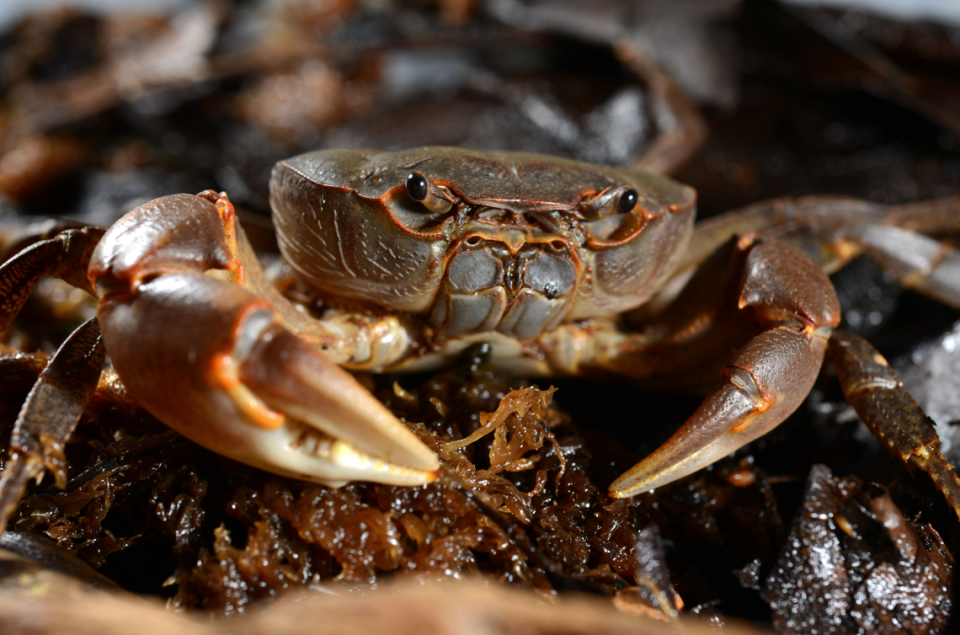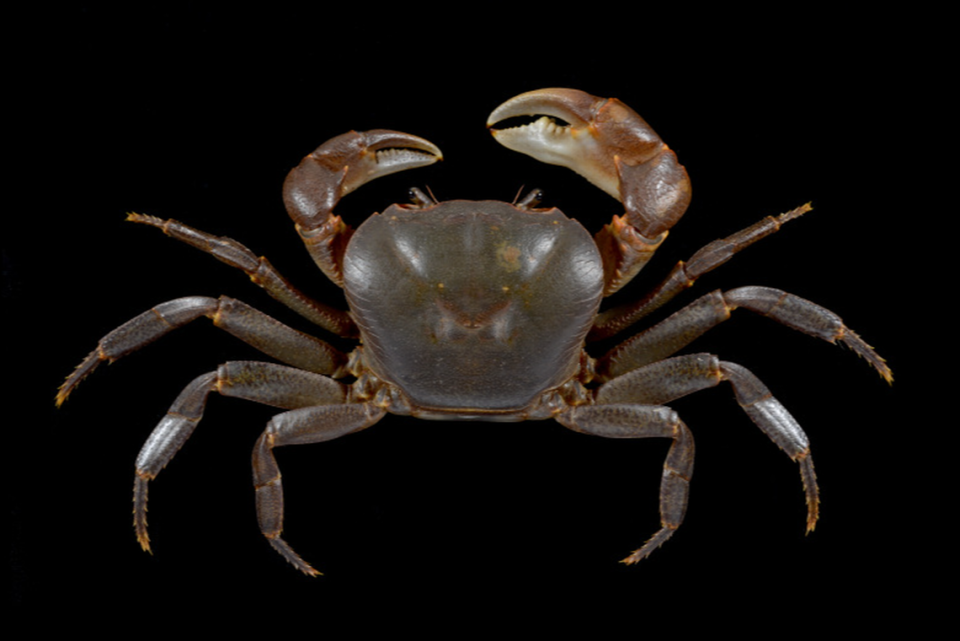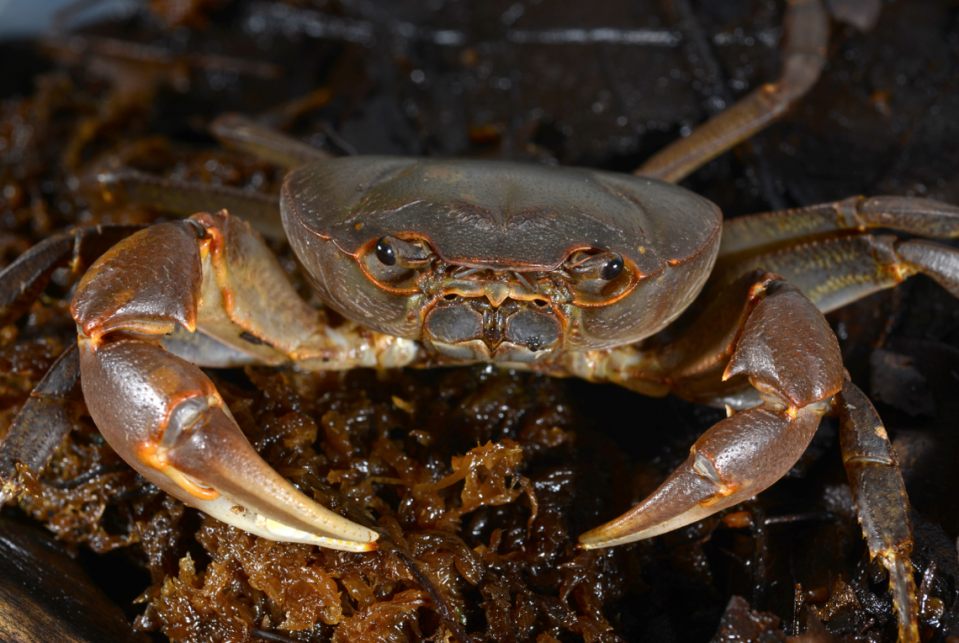Surgeon travels to the Philippines highlands — then discovers a new species. See it
Robert L. Chang, a colorectal surgeon from Manila, has taken many trips up to the Philippines highlands. Considering himself a naturalist, he explores the rugged terrain on the northern island of the country.
On one trip, about 55 miles south of the capital city, Chang stopped at the freshwater streams atop Mount Manabu.
Looking through the “pristine” rocky streams, he saw the brown legs of a crab sticking out from the stones.
He grabbed a few of the crabs and brought them to a contact who reached out to a group of researchers to take a closer look.
It was a new species.

Discover more new species
Thousands of new species are found each year. Here are three of our most eye-catching stories from the past week.
→Deep-sea creature — with 'rectangular' shape — discovered
→Sea creature 'adorned with gold' found on coral in Philippines
→Clawed forest creature found lurking near temple in India
“The new species is morphologically most similar to a group of Philippine Sundathelphusa (the philippina group) in the general shape and proportions of the carapace and legs,” Jose Christopher Escano Mendoza, researcher and crustacean curator at the Lee Kong Chian Natural History Museum, told McClatchy News in an email.
Mendoza and his colleagues published the discovery in the journal Crustaceana on April 30.
“It can be distinguished from those other species by the form of the epistome and external maxillipeds (mouthparts), the dorsal ridges on the carapace (body), and the overall form of the male reproductive structures,” Mendoza said.
The crab is “mostly brown overall” but has some darker brown spots, and orange and pale yellow coloring, according to the study.
The species was named Sundathelphusa roberti after Chang, the discoverer.

“As is the case with most invertebrates, we know very little about the behavior and ecology of these crabs, except what we can infer from their morphology and from the places where they were collected,” Mendoza said. “Based on these, we believe that these crabs are fully aquatic, probably omnivorous and/or detritivorous, and they prefer the relatively less disturbed/more pristine mountainous areas.”
The crabs likely hide under rocks or create burrows in the dirt along the water’s edge, according to the study.
Mendoza said these crabs have been geographically separated from other known species for a significant amount of time. This, with their morphological differences, make researchers confident the crab is a new species, but it will later be confirmed with molecular testing.
Since the Philippines is made up of many islands, each island is likely to have unique species that can’t travel from one island to another.
“Sundathelphusa roberti is the 35th species of the Sundathelphusa genus to be described from the Philippines, but we know it won’t be the last. I believe we have only discovered a fraction of the total diversity, going by the number of suitable locations/habitats that have been explored, as well as the number of specimens already in museums awaiting description,” Mendoza said.

Mendoza said the discovery is part of an ongoing project to study the endemic freshwater crabs of the Philippines, led by his team at the museum.
“I’ve always been interested in natural history, even as a child, thanks to the influence of my parents and grandparents... and as I went through university in the Philippines, I felt that there was not enough local expertise in invertebrate zoology. So I made a career out of it,” Mendoza said.
Another species discovery might be coming soon, the researchers said in the study.
While Chang was scouring the streams, he spoke with locals who told him “there was also a reddish-orange crab usually seen on rainy days climbing trees in the area,” according to the study.
Another new species would only add to the diversity of crab species found here.
“This combination of high endemicity and high diversity, makes the conservation of freshwater crabs a good priority for the Philippines, especially in this age where many freshwater habitats are threatened by degradation and destruction. I may be biased, but the freshwater crab makes an excellent poster child for conservation efforts targeted at freshwater ecosystems and species,” Mendoza said.
The species was discovered in the Batangas region of Luzon, the northernmost large island of the Philippines.
‘Dragon ball’ creature — with countless legs — discovered in Thailand. See new species
‘Exceedingly rare’ creature — 3 feet long and scaly — found on tree in Tibet. See it
‘Golden’-tailed creature — pregnant with 2 eggs — discovered as new species. See it
Technicolored creature — found in Brazil river — discovered as a new species. See it

